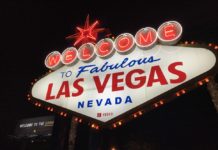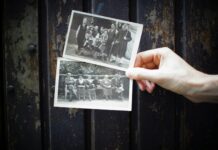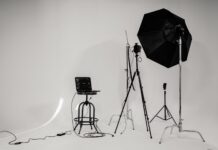1Photo of The Week

Ofir Barak | Instagram | Website
2The Mean Streets of New York City in ’70s, ‘ 80s, ’90s

We are all familiar with the dark side of New York City in the 70s, 80s and 90s. It has been depicted in films like ‘Taxi Driver’ and recently, in David Simon’s HBO show ‘The Deuce’. Time Square was infamously known for being a seedy place filled with criminals,prostitutes and X-Rated theaters. But the photographs taken by Carrie Boretz, offers her audience a bigger bite to the Big Apple.
Her new book, Street: New York City – 70s, 80s, 90s focuses less on the drama associated with the time. Boretz was more interested in the subtle and familiar moments of everyday life in the neighborhoods where she lived, a time when the city was filled with graffiti and less sanitized. The body of work shows a city filled with contradictions where all walks of life shared a common space. Her photos of children playing, daily commuters, demonstrations and parades and other joys and pitfalls of humanity are timeless subjects.
3Elliott Erwitt’s Pittsburgh

“Everything was grand, heroic. Everything seemed to be gigantic in Pittsburgh—the people, the history. Sinuousness. Power. Substance. Meaningfulness.”
— Pittsburgh-born poet Jack Gilbert, in a 2005 Paris Review interview
In September 1950, 22-year-old Elliott Erwitt stepped off a Greyhound bus in Pittsburgh and, new to the city, took a small, rented room at the YMCA downtown. The Paris-born Erwitt had traveled to Pittsburgh from New York at the invitation of Roy Stryker, the former head of the Information Division of the federal government’s Farm Security Administration. Controlling, magnanimous, often impossibly mission-driven, Stryker had furthered the careers of countless photojournalists, many of whom – Walker Evans, Ben Shahn, Dorothea Lange, Marion Post Wolcott, Gordon Parks and more – in later years would be recognized as pioneers whose visual stories helped define the first half of the 20th century.
4RESTRICTED AREAS – DANILA TKACHENKO’S PHOTOGRAPHS OF SOVIET RUINS

According to the Foundation, the wider season of exhibitions and events intends to focus “on utopian public space and the quest for new national identities across the post-Soviet world”.
Along with Tkachenko’s images of deserted structures left to weather in ice and snow, Dead Space and Ruins features the work of three other artists working within photography and film who have also been capturing the decaying architecture of the former Soviet Union: Vahram Agasian, Anton Ginzburg and Eric Lusito.
5Yakub Merchant’s Street Photography Emphasizes People Through Their Windows

Do you ever wonder how many of the personal projects you find most interesting were sparked by a spontaneous idea? I sometimes do, and today’s featured set of portraits is definitely a case in point. Taken by London-based photographer Yakub Merchant while on assignment, it was most likely just an idea he shelved for later as he was shooting for work. While Yakub was working as a still photographer on a film set in India, he noticed all these people watching the scenes from a vantage point in their homes. As I imagine it, Yakub took interest and began taking their portraits in between shots, eventually ending up with a nice collection for an aptly titled set called Windows.
“People in India love their movies, but nothing fascinates them more than watching the actual making of it,” Yakub shares on the idea that sparked this personal series. “Parts of the film were shot in the narrow bylanes of Old Delhi. People seemed to just emerge, as if from the walls, to watch the filming.”
6See Powerful Pictures Of Life in Mid 20th Century America

Floyd and Lucille Burroughs; Walker Evans (American, 1903 – 1975); 1936; Gelatin silver print; 19.1 × 21.4 cm (7 1/2 × 8 7/16 in.); 84.XM.956.336
The museum gave a press preview of the collection last week, which included several Fortune covers and photo essays. Evans, born in 1903, is best known for documenting the effects of the Great Depression. His documentary style of photography not only captured the suffering and strength of the nation through portraits, but also via everyday details like junked automobiles and urban architecture. Unlike most other photojournalists at that time, he also wrote and laid out his photo essays himself, taking ownership of his photo essays from start to finish.
One such package, on display at the museum, is titled “People and Places in Trouble.” The story, published in our March 1961 issue, shows a range of distressed subjects throughout the Eastern region of our country. But Evans’s writing is just as harrowing as his photos: “They speak with their eyes. People out of work are not given to talking much about the one thing on their minds. You only sense, by indirection, degrees of anger, shades of humiliation, and echoes of fear.”



































